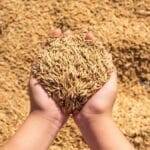Main Points In Hindi (मुख्य बातें – हिंदी में)
रिपोर्ट में निम्नलिखित मुख्य बिंदुओं को उजागर किया गया है:
-
गृहस्थी कृषि गतिविधियों का प्रभाव: विभिन्न कृषि गतिविधियों का ग्रीनहाउस गैस (जीएचजी) उत्सर्जन पर अलग-अलग प्रभाव पड़ता है। कुछ गतिविधियाँ कम उत्सर्जन में मदद कर सकती हैं, जबकि अन्य अधिक उत्सर्जन का कारण बन सकती हैं।
-
कार्बन पृथक्करण की भूमिका: रिपोर्ट में बताया गया है कि कृषि प्रथाओं के माध्यम से कार्बन पृथक्करण को बढ़ाकर जीएचजी-नकारात्मकता को प्राप्त किया जा सकता है। इस प्रक्रिया के अंतर्गत मिट्टी में कार्बन का संचय शामिल है, जो वातावरण से कार्बन डाइऑक्साइड को हटाने में मदद करता है।
-
संवेदनशीलता और विविधता का महत्व: विभिन्न स्थानों और पर्यावरणीय परिस्थितियों में कृषि गतिविधियों का प्रभाव भिन्न हो सकता है। रिपोर्ट में संवेदनशील कृषि प्रथाओं को पहचानने की आवश्यकता पर जोर दिया गया है जो स्थानीय परिस्थितियों के अनुसार कार्य करती हैं।
-
अतिरिक्त शोध की आवश्यकता: जीएचजी-नकारात्मक कृषि को विकसित करने के लिए आवश्यक तकनीकों और प्रथाओं की पहचान करने के लिए और अधिक शोध की आवश्यकता है। इसमें कार्बन पृथक्करण के प्रभावी तरीके और प्रबंधन रणनीतियों का अध्ययन भी शामिल है।
- नीतिगत समर्थन की आवश्यकता: रिपोर्ट में यह सुझाव दिया गया है कि जीएचजी-नकारात्मक कृषि को बढ़ावा देने के लिए नीतियों और कार्यक्रमों का विकास किया जाना चाहिए, जो किसानों को साफ और प्रभावी कृषि प्रथाओं को अपनाने के लिए प्रेरित करें।
Main Points In English(मुख्य बातें – अंग्रेज़ी में)
Here are 3 to 5 main points from the report discussing how certain agricultural activities can achieve greenhouse gas (GHG) negative outcomes by combining reduced emissions with increased carbon sequestration, along with the necessary additional research needed:


-
GHG Emission Reduction Practices: The report highlights specific agricultural practices that can significantly reduce greenhouse gas emissions, such as no-till farming, cover cropping, and crop rotation, which contribute to lower overall emissions in the agricultural sector.
-
Enhanced Carbon Sequestration: It emphasizes the importance of integrating techniques that enhance carbon sequestration in soil, such as agroforestry, organic farming practices, and the incorporation of biochar, which can help in capturing and storing atmospheric carbon effectively.
-
Synergistic Approaches: The report discusses the potential for synergistic effects between different agricultural methods that simultaneously lower GHG emissions while increasing carbon capture, potentially leading to a net negative GHG balance.
-
Need for Additional Research: It outlines the necessity for further research to understand the long-term impacts of these practices, the optimal combinations for various agricultural systems, and the economic implications for farmers transitioning to these methods.
- Policy and Support Mechanisms: The report calls for the development of supportive policies and incentives aimed at promoting GHG-negative agricultural practices, ensuring farmers are motivated and able to adopt these environmentally beneficial strategies.
Complete News In Hindi(पूरी खबर – हिंदी में)
रिपोर्ट बताती है कि कैसे कुछ कृषि गतिविधियों से कम ग्रीनहाउस गैस (जीएचजी) उत्सर्जन को दूसरों में बढ़े हुए कार्बन पृथक्करण के साथ मिलाकर जीएचजी-नकारात्मक कृषि को प्राप्त किया जा सकता है। यह इसे पूरा करने में मदद के लिए आवश्यक अतिरिक्त शोध का भी वर्णन करता है।
Complete News In English(पूरी खबर – अंग्रेज़ी में)
The report explains how combining certain agricultural activities that produce low greenhouse gas (GHG) emissions with others that enhance carbon sequestration can lead to GHG-negative farming. It also describes the additional research needed to achieve this goal.
Source link








